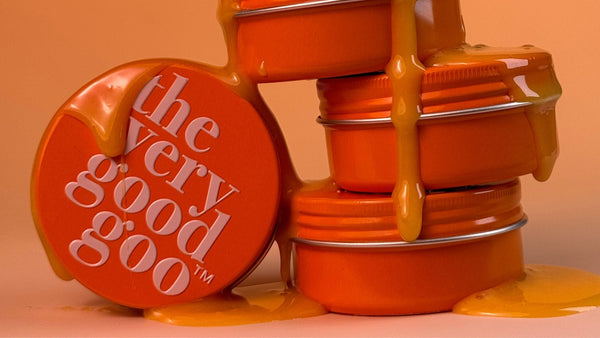Why I’ll Always Choose Plant-Based Balms Over Petroleum-Based Ones

When I first started my journey into skincare formulation, I had no idea just how vast the ingredient world truly was—or how much of it was built on convenience over care. One of the biggest lessons? Learning the difference between balms that nourish and those that just cover.
Let’s talk about the elephant in the bathroom drawer: petroleum jelly.
It’s a common base in many ointments and balms on the market, including some that feature fruit extracts like pawpaw and other botanical-sounding ingredients. While not all are formulated this way, quite a few rely mostly on petroleum jelly for their texture and barrier-forming properties. It’s great at sealing in moisture, but doesn’t offer much beyond that. Think of it as cling film for your skin—helpful in certain situations, but not exactly nourishing.
On the other hand, balms made with plant oils and botanical extracts—like olive, jojoba, rosehip, calendula or chamomile—can support the skin differently. These ingredients interact with the outermost layer of the skin (the stratum corneum), delivering antioxidants, essential fatty acids, and vitamins that the skin can recognise and put to use.
Here's the thing:
When you apply a botanical-rich balm to your skin, it doesn’t just sit on the surface—it actively supports the skin barrier. Plant-based ingredients like oils, extracts, and waxes can be biocompatible, meaning they mimic the structure of our skin’s natural sebum. That’s part of what makes them feel so comforting, and why they can help calm flare-ups, dryness, and sensitivity.
Another biggie? Transparency.
Some petroleum-based balms are marketed with words like “natural” or “healing,” but the formula often relies on petroleum jelly as the main ingredient. When you use a plant-based balm made with care, the whole jar is working for you—not just one percent of it.
And if you’re applying something to your child’s skin—especially around delicate areas like lips or hands—you want it to be as safe and gentle as possible. That’s one of the many reasons I created my balm to be free from petroleum, synthetic fragrance, synthetic preservatives, and other harsh ingredients. Just honest, nourishing goodness that’s safe for the whole family.
The Big Realisation: What Are You Really Paying For?
Some popular skincare oils are often used to improve the appearance of scars and stretch marks. They’ve earned a place in many routines—but when I started looking more closely at ingredients while formulating my own products, I noticed that many rely heavily on mineral oil, a highly refined petroleum derivative. It’s similar in origin to petroleum jelly, just in liquid form.
That doesn’t make it harmful—plenty of people are happy with it, and that’s totally valid. But for me, it sparked a shift. I began thinking more about what I was putting on my skin and whether it truly nourished. That realisation nudged me toward using plant-based ingredients instead—something that felt more in tune with my skin and my values.
The Birth of The Very Good Goo
I formulated The Very Good Goo Intensive Care Skin Balm with every detail in mind: no petroleum, no plastic, no synthetic fragrances, no palm oil. It took me over two years to perfect it, testing on real people (myself, friends, family), making sure it worked in different seasons and on different skin types.
So the next time you reach for a balm, take a moment to read the label. Does it nourish? Or does it just coat? Is it actually doing something for your skin, or just filling the space?
I dive deeper into this in my podcast, Botanical Skincare Secrets. If you’re curious about how to truly nourish your skin—and what to look for on labels—you can listen to the episode here.
Because in the end, your skin deserves more than just a seal. It deserves real love and care.
— Eva, Founder, The Very Good Goo




